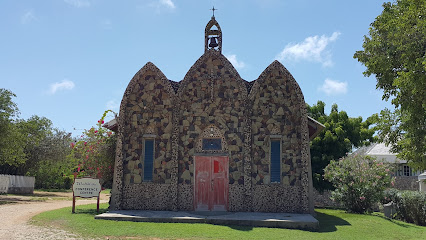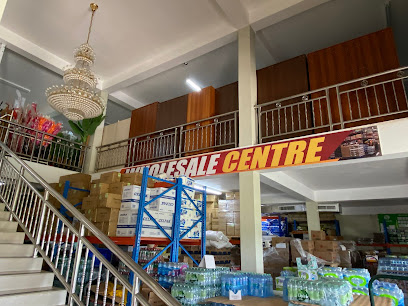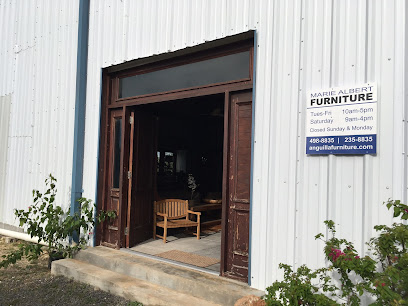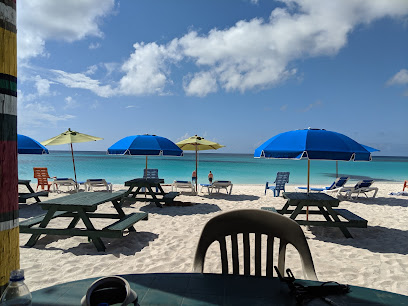
South Hill - The Heartbeat of Anguilla
Discover South Hill, Anguilla - a vibrant community offering stunning Caribbean views, rich history, and lively festivals. Immerse yourself in the authentic island experience.
Located in the central region of Anguilla, South Hill is a vibrant community that offers an authentic taste of island life. Known for its friendly locals and lively atmosphere, it's the perfect place to immerse yourself in Anguillan culture. From the moment you arrive, you'll be greeted with stunning views of the Caribbean Sea and the island's lush landscapes. Whether you're interested in exploring historical sites, sampling local cuisine, or simply relaxing on pristine beaches, South Hill has something for everyone. The area is home to several notable landmarks, including the Heritage Collection Museum, which provides a fascinating insight into Anguilla's rich history. For food lovers, the local restaurants serve up mouth-watering dishes made from fresh, local ingredients, showcasing the island's culinary delights. One of the highlights of visiting South Hill is the opportunity to experience its vibrant music scene. The area is known for its lively festivals and events, where you can enjoy traditional Anguillan music and dance. With its warm climate, welcoming community, and diverse attractions, South Hill is an ideal destination for anyone looking to experience the best of Anguilla.
Local tips in South Hill
- Visit the Heritage Collection Museum to learn about Anguilla's history.
- Try the local cuisine at the many restaurants in South Hill.
- Attend one of the local music festivals for a taste of traditional Anguillan music and dance.
- Explore the nearby beaches for a relaxing day by the sea.
- Interact with the friendly locals to get insider tips on hidden gems.
South Hill - The Heartbeat of Anguilla
Located in the central region of Anguilla, South Hill is a vibrant community that offers an authentic taste of island life. Known for its friendly locals and lively atmosphere, it's the perfect place to immerse yourself in Anguillan culture. From the moment you arrive, you'll be greeted with stunning views of the Caribbean Sea and the island's lush landscapes. Whether you're interested in exploring historical sites, sampling local cuisine, or simply relaxing on pristine beaches, South Hill has something for everyone. The area is home to several notable landmarks, including the Heritage Collection Museum, which provides a fascinating insight into Anguilla's rich history. For food lovers, the local restaurants serve up mouth-watering dishes made from fresh, local ingredients, showcasing the island's culinary delights. One of the highlights of visiting South Hill is the opportunity to experience its vibrant music scene. The area is known for its lively festivals and events, where you can enjoy traditional Anguillan music and dance. With its warm climate, welcoming community, and diverse attractions, South Hill is an ideal destination for anyone looking to experience the best of Anguilla.
When is the best time to go to South Hill?
Iconic landmarks you can’t miss
Elvis Beach Bar
Discover the vibrant atmosphere, delicious Caribbean cuisine, and stunning views at Elvis Beach Bar in Anguilla, where relaxation meets excitement.

Zemi Beach House, LXR Hotels & Resorts
Experience unparalleled luxury at Zemi Beach House, LXR Hotels & Resorts in Anguilla, where breathtaking beaches meet exquisite hospitality.

La Vue Boutique Inn
Discover La Vue Boutique Inn, a charming bed & breakfast in Anguilla's South Hill Village, offering stunning views and authentic local experiences.

Frangipani Beach Resort
Experience the ultimate tropical getaway at Frangipani Beach Resort in Anguilla, where luxury meets the beauty of nature.

Anguilla
Discover the tranquil beauty of Anguilla, a Caribbean gem with stunning beaches, rich culture, and exceptional dining experiences.

Anguilla Arch
Explore the stunning Anguilla Arch, a breathtaking natural landmark offering serene views and a perfect backdrop for unforgettable Caribbean memories.

The Ferryboat Inn
Experience the charm of Anguilla at The Ferryboat Inn, your peaceful retreat near stunning beaches and vibrant culture.

Anguilla-Clayton J. Lloyd Airport
Clayton J. Lloyd Airport: Your gateway to the tranquil beauty and vibrant culture of Anguilla, the Caribbean's hidden gem.

Fountain Residences Anguilla
Experience the perfect blend of luxury and nature at Fountain Residences Anguilla, your ideal vacation getaway in the Caribbean.

St. Gerard's Roman Catholic Church
Explore the tranquility and architectural beauty of St. Gerard's Roman Catholic Church, a serene spiritual haven in Anguilla's heart.

Spyglass Hill Villa, Anguilla
Discover unparalleled luxury and breathtaking views at Spyglass Hill Villa in Anguilla – your serene escape in paradise.

Meads Bay Beach
Discover the tranquil beauty of Meads Bay Beach in Anguilla, where pristine sands and crystal-clear waters create a tropical paradise for all.

Anguilla Sands and Salts
Explore Anguilla Sands and Salts for unique souvenirs and local arts that capture the spirit of the Caribbean island.

Anguilla Watersports
Explore Anguilla's crystal-clear waters with thrilling water sports at Anguilla Watersports—your ultimate adventure hub in paradise.

Sandy Ground Beach
Discover the serene beauty of Sandy Ground Beach in Anguilla, a perfect blend of relaxation, local culture, and stunning sunsets.

Unmissable attractions to see
Anguilla Arch
Explore the stunning Anguilla Arch, a breathtaking natural landmark offering picturesque views and serene surroundings in Anguilla's beautiful landscapes.

Sandy Island
Discover the serenity of Sandy Island in Anguilla, a tropical paradise with pristine beaches, vibrant marine life, and relaxing atmospheres.

Tradition Sailing Charters Anguilla
Sail through the pristine waters of Anguilla with Tradition Sailing Charters, where unforgettable adventures await every traveler.

Crocus Bay Beach
Discover the tranquility and beauty of Crocus Bay Beach in Anguilla, where soft sands and clear waters create a perfect paradise for relaxation and adventure.

Meads Bay Beach
Experience the tranquility and breathtaking beauty of Meads Bay Beach, Anguilla's premier destination for relaxation and water activities.

Prickley Pear Cays
Discover the untouched paradise of Prickley Pear Cays in Anguilla, where pristine beaches and vibrant marine life await your exploration.

Shoal Bay Village
Explore the breathtaking beauty and vibrant culture of Shoal Bay Village, Anguilla's tropical paradise for relaxation and adventure.

Essential places to dine
Elvis Beach Bar
Experience the best of Anguilla at Elvis Beach Bar – where delicious food meets stunning ocean views in a lively beachfront setting.

Da'Vida
Experience culinary bliss at Da'Vida in Anguilla - where local flavors meet stunning coastal views.

Roy's Bayside Grill
Experience exquisite Caribbean cuisine and breathtaking views at Roy's Bayside Grill in Anguilla – where every meal is a celebration.

Sunshine Shack
Experience exquisite Caribbean flavors at Sunshine Shack on Rendezvous Bay Beach - where culinary delight meets stunning ocean views.

Ocean Echo Anguilla
Experience exquisite Caribbean flavors and stunning ocean views at Ocean Echo Anguilla – a must-visit dining destination for every traveler.

Tasty's
Experience the flavors of Anguilla at Tasty's – where every dish tells a story of Caribbean culinary tradition.

Veya Restaurant
Discover Veya Restaurant in Sandy Ground, Anguilla - where exquisite cuisine meets enchanting treehouse ambiance for an unforgettable dining experience.

Dolce Vita
Experience authentic Anguillian cuisine with breathtaking views at Dolce Vita in Sandy Ground.

E’s Oven
Experience the vibrant flavors of Caribbean cuisine at E's Oven in Anguilla - where every meal is crafted with passion and fresh ingredients.

Corner Bar And Pizza
Discover unique pizzas and local flavors at Corner Bar And Pizza in North Hill Village, Anguilla – a must-visit for every food-loving traveler.

Andy's Restaurant & Bar
Experience authentic Caribbean cuisine at Andy's Restaurant & Bar in Anguilla - where vibrant flavors meet stunning views.

Barrel Stay Beach Front Restaurant
Experience exquisite seafood and stunning ocean views at Barrel Stay Beach Front Restaurant in Anguilla for an unforgettable dining adventure.

Johnno's
Discover the vibrant flavors and lively atmosphere at Johnno's restaurant in Sandy Ground, Anguilla - a true culinary gem by the sea.

MIRABELLE'S
Discover the vibrant flavors and lively atmosphere at Mirabelle's - Anguilla's premier tapas bar and nightlife destination.

English Rose
Experience authentic Caribbean cuisine at English Rose in Anguilla, where fresh local ingredients meet warm hospitality.

Markets, malls and hidden boutiques
Irie Life
Explore Irie Life in Anguilla for unique local gifts, handcrafted souvenirs, and a warm atmosphere that embodies Caribbean culture.

Unique Trading
Discover the best of local and international groceries at Unique Trading, Anguilla's top supermarket for tourists and locals alike.

Mingz Supermarket
Explore the flavors of Anguilla at Mingz Supermarket, your go-to destination for local and international groceries in South Hill Village.

Sea Spray Gift Shop
Explore the heart of Anguilla at Sea Spray Gift Shop, your destination for authentic local crafts and memorable souvenirs.

The Gift Box
Explore The Gift Box in Anguilla for unique souvenirs and local crafts that capture the essence of the Caribbean.

Anguilla Sands and Salts
Explore Anguilla Sands and Salts for unique souvenirs and local treasures that embody the spirit of the island.

Lake's Home Decor & Haberdashery
Explore Lake's Home Decor & Haberdashery in Anguilla for unique home goods that reflect the island's vibrant culture and craftsmanship.

LodeVole Boutique
Explore LodeVole Boutique in Anguilla for unique clothing that captures the island's charm and style.

All About You Wedding Invitations and More
Explore unique gifts and personalized wedding invitations at All About You in Cedar Village, Anguilla – a treasure trove for unforgettable souvenirs.

H &M Tile House Anguilla
Explore the vibrant world of tiles at H & M Tile House Anguilla, where artistry meets craftsmanship in a stunning selection of unique designs.

Bijoux
Explore Bijoux Boutique in Sandy Ground, Anguilla, for unique clothing and accessories that embody the island's vibrant fashion scene.

Marie Albert Furniture
Explore exquisite furniture and home decor at Marie Albert Furniture, a treasure trove of Anguilla's unique craftsmanship.

Rainbow Farms
Experience the essence of Anguilla at Rainbow Farms, your go-to destination for fresh, local produce in South Hill Village.

Beach Happy
Explore Beach Happy in Blowing Point, Anguilla for vibrant beachwear and accessories that embody the spirit of island life.

Cheddie's Carving Studio
Explore Anguilla's rich artistic heritage at Cheddie's Carving Studio, where unique handcrafted gifts await every visitor.

Essential bars & hidden hideouts
Elvis Beach Bar
Discover the perfect blend of relaxation and entertainment at Elvis Beach Bar in Anguilla, where delicious Caribbean cuisine meets stunning ocean views.

Bankie Banx's Dune Preserve
Discover the lively spirit of Anguilla at Bankie Banx's Dune Preserve, a vibrant live music bar and restaurant on Rendezvous Bay.

Gwen's Reggae Bar and Grill
Experience the vibrant culture and flavors of Anguilla at Gwen's Reggae Bar and Grill, where Caribbean vibes meet savory grilled delights.

SandBar
Discover the lively spirit of Anguilla at SandBar, where delicious cocktails and stunning views create an unforgettable Caribbean experience.

Lit lounge
Discover the lively nightlife of Lit Lounge in Sandy Ground, Anguilla, where delicious cocktails and vibrant music create unforgettable experiences.

Sunset Lounge
Experience the perfect blend of exquisite sushi and breathtaking sunsets at Sunset Lounge in Anguilla, a must-visit for every traveler.

Waves Anguilla
Experience the best of Caribbean cuisine with stunning ocean views at Waves Anguilla, a must-visit beach shack for every tourist.

Changes Bar
Experience the lively spirit of Anguilla at Changes Bar—your go-to spot for refreshing drinks, local culture, and unforgettable evenings.

Coconuts Beachbar And Grill
Experience the vibrant atmosphere and delicious cuisine at Coconuts Beachbar And Grill, your perfect seaside escape in Anguilla.

Unique Bar & Grill
Discover the flavors of the Caribbean at Unique Bar & Grill, where every meal is a celebration of local culture and culinary artistry.

Dancing Bear Restaurant and Bar
Experience the vibrant atmosphere and delicious flavors of Dancing Bear Restaurant and Bar in Anguilla, where island charm meets culinary excellence.

Bohio Bar & Lounge
Discover the vibrant Bohio Bar & Lounge at Shoal Bay East, where delicious cocktails meet stunning sunsets in Anguilla.

The Half Shell Beach Bar
Discover the tropical charm of The Half Shell Beach Bar in Anguilla, where delicious cuisine meets breathtaking ocean views for an unforgettable experience.

Amiola's
Experience the vibrant nightlife at Amiola's in Anguilla, where delicious cocktails and a lively atmosphere await every traveler.

Dip N Strip
Experience the vibrant nightlife and breathtaking views at Dip N Strip, Anguilla's premier beachfront bar with delightful cocktails and lively atmosphere.

Local Phrases
-
- HelloBonjou
[bon-zhoo] - GoodbyeAu revoir
[oh re-vwar] - YesWi
[wee] - NoNon
[non] - Please/You're welcomeS'il vous plait
[see voo pleh] - Thank youMerci
[mehr-see] - Excuse me/SorryPardon
[par-dohn] - How are you?Koman ou ye?
[koh-mahn oo yay] - Fine. And you?Byen. E ou menm?
[bee-yen ay oo mehn] - Do you speak English?Ou pale angle?
[oo pah-lay ahn-glay] - I don't understandMwen pa konprann
[mwehn pah kohn-prahn]
- HelloBonjou
-
- I'd like to see the menu, pleaseMwen ta renmen we meni a, silvouple
[mwehn tah rehn-mehn weh meh-nee ah seel-voo-pluh] - I don't eat meatMwen pa manje vyann
[mwehn pah mahn-jay vee-ahn] - Cheers!Sante!
[sahn-tay] - I would like to pay, pleaseMwen ta renmen peye, silvouple
[mwehn tah rehn-mehn pay-yay seel-voo-pluh]
- I'd like to see the menu, pleaseMwen ta renmen we meni a, silvouple
-
- Help!Ed!
[ed] - Go away!Ale wè!
[ah-lay weh] - Call the Police!Rele Lapolis!
[reh-lay lah-poh-leece] - Call a doctor!Rele yon doktè!
[reh-lay yohn dohk-teh] - I'm lostMwen pedi
[mwehn peh-dee] - I'm illMwen malad
[mwehn mah-lahd]
- Help!Ed!
-
- I'd like to buy...Mwen ta renmen achte...
[mwehn tah rehn-mehn ah-sh-tay] - I'm just lookingMwen jis gade
[mwehn zhees gah-day] - How much is it?Konbyen sa koute?
[kohn-byen sah koot] - That's too expensiveSa twò chè
[sah twah sheh] - Can you lower the price?Ou kapab bese pri a?
[oo kah-pah bays pray ah]
- I'd like to buy...Mwen ta renmen achte...
-
- What time is it?Kisa lè li ye?
[kee-sah lay lee yay] - It's one o'clockLi enpil
[lee ahn-peel] - Half past (10)Demi-pa (10)
[deh-mee pah (dix)] - MorningMaten
[mah-tehn] - AfternoonApremidi
[ah-preh-mee-dee] - EveningSwale
[swah-lay] - YesterdayYe
[yay] - TodayJodi a
[zho-dee ah] - TomorrowDemen
[deh-mehn] - 11
[uhn] - 22
[de] - 33
[twah] - 44
[kat] - 55
[sank] - 66
[sis] - 77
[sept] - 88
[wit] - 99
[nèf] - 1010
[dis]
- What time is it?Kisa lè li ye?
-
- Where's a/the...?Ki kote a...
[kee koh-tay ah] - What's the address?Kisa adrès la ye?
[kee-sah ah-dreh lah yay] - Can you show me (on the map)?Ou kapab montre mwen (sou kat)?
[oo kah-pah mohn-tray mwehn (soo kaht)] - When's the next (bus)?Ki lè pwochen la (bous)?
[kee lay pwosh-eh lay (boos)] - A ticket (to ....)Yon tikè (pou ....)
[yohn tee-kay (poo)]
- Where's a/the...?Ki kote a...
History of South Hill
-
Long before European colonization, South Hill was inhabited by the Arawak people. This indigenous group lived on the island for centuries, utilizing its rich natural resources and fertile land. Evidence of their presence can still be found in various archaeological sites around South Hill, including pottery shards and ancient tools.
-
The arrival of European explorers in the 17th century marked a significant turning point in South Hill's history. The island became a strategic point for colonial powers such as the British and the French. South Hill, with its elevated terrain, served as a lookout point to monitor naval activities in the surrounding waters. The remnants of colonial architecture and fortifications in the area bear testimony to this era.
-
During the 18th and 19th centuries, South Hill was part of Anguilla's thriving plantation economy. Sugarcane, cotton, and tobacco plantations dominated the landscape, and the labor was primarily provided by enslaved Africans. The ruins of old plantation houses and sugar mills in South Hill offer a glimpse into this period of economic activity and social hierarchy.
-
The abolition of slavery in the British Empire in 1834 brought significant social changes to South Hill. Freed slaves gradually established their own communities and began to cultivate the land for subsistence farming. This period marked the beginning of a new social structure and the rise of local culture, which blended African, European, and indigenous influences.
-
In the 20th century, South Hill transitioned from an agrarian society to a more diversified economy. The development of tourism became a major focus, with the area attracting visitors from around the world. Today, South Hill is known for its vibrant culture, scenic beauty, and historical landmarks. The transformation of old plantation estates into boutique hotels and cultural centers has revitalized the area, making it a key destination on the island.
-
South Hill is a hub of cultural activity in Anguilla, hosting several festivals and events throughout the year. The annual Anguilla Summer Festival, which includes boat races, parades, and music, is a highlight. Traditional practices such as boat building, fishing, and folk music continue to thrive, preserving the rich cultural heritage of the area. These events and traditions offer a unique insight into the local way of life and the community's enduring spirit.
South Hill Essentials
-
South Hill is located on the island of Anguilla in the Caribbean. The nearest airport is Clayton J. Lloyd International Airport (AXA), which has direct flights from several major cities in the Caribbean and connecting flights from larger international airports. From the airport, South Hill is approximately a 15-minute drive. Alternatively, you can reach Anguilla by ferry from St. Martin, which takes around 20 minutes. Private boat charters are also an option for those coming from nearby islands.
-
South Hill is a small area, and many attractions are within walking distance. Taxis are readily available and are the primary mode of transportation for tourists. Car rentals are also available for those who prefer to explore the island at their own pace. While there is no public bus system, some hotels offer shuttle services to popular destinations. Biking is another option, as the terrain is relatively flat and bike rentals are available.
-
The official currency of Anguilla is the Eastern Caribbean Dollar (XCD), but US dollars are widely accepted. Major credit cards are accepted at most hotels, restaurants, and shops. However, it is advisable to carry some cash for smaller establishments and local markets. ATMs are available, but fees may apply for international cards, so plan accordingly.
-
South Hill is generally a safe destination for tourists. Petty crime, such as pickpocketing, can occur, so it is advisable to stay vigilant and keep personal belongings secure. Avoid walking alone at night in poorly lit areas. There are no specific high-crime areas targeting tourists in South Hill, but it is always best to stay cautious and aware of your surroundings.
-
In case of emergency, dial 911 for immediate assistance. South Hill has a local police station and medical facilities, including a clinic for minor health issues. It is recommended to have travel insurance that covers medical emergencies. Pharmacies are available for over-the-counter medications. For more serious medical issues, Princess Alexandra Hospital is located in The Valley, about a 10-minute drive away.
-
Fashion: Do dress comfortably and casually, but avoid overly revealing clothing outside of beach areas. Lightweight clothing is advisable due to the tropical climate. Religion: Do respect local religious customs and dress modestly when visiting religious sites. Public Transport: Do use taxis for convenience, as there is no public bus system. Don't rely on hitchhiking as a mode of transportation. Greetings: Do greet locals with a friendly 'Good morning' or 'Good afternoon.' A handshake is also a common greeting. Eating & Drinking: Do try the local cuisine and seafood. Don't refuse food or drink offered by hosts, as it is considered impolite.
-
To experience South Hill like a local, visit the local markets where you can buy fresh produce and traditional Anguillian goods. Engage with locals, as they are often friendly and willing to share stories about the island's history and culture. Don't miss visiting the nearby beaches, such as Rendezvous Bay and Sandy Ground, for a more relaxed and authentic experience. For a unique culinary experience, try the local barbecue at roadside stands.
Trending Landmark in South Hill
-
Elvis Beach Bar
-
Zemi Beach House, LXR Hotels & Resorts
-
La Vue Boutique Inn
-
Frangipani Beach Resort
-
Anguilla
-
Anguilla Arch
-
The Ferryboat Inn
-
Anguilla-Clayton J. Lloyd Airport
-
Fountain Residences Anguilla
-
St. Gerard's Roman Catholic Church
-
Spyglass Hill Villa, Anguilla
-
Meads Bay Beach
-
Anguilla Sands and Salts
-
Anguilla Watersports
-
Sandy Ground Beach
Nearby Cities to South Hill
-
Things To Do in Blowing Point Village
-
Things To Do in Sandy Ground Village
-
Things To Do in North Hill Village
-
Things To Do in George Hill
-
Things To Do in Long Bay Village
-
Things To Do in West End Village
-
Things To Do in Shoal Bay Village
-
Things To Do in Island Harbour
-
Things To Do in East End Village
-
Things To Do in Sint Peters
-
Things To Do in Lowlands
-
Things To Do in Cole Bay
-
Things To Do in Maho
-
Things To Do in Dieppe Bay Town
-
Things To Do in Sandy Point Town







